Special Issue
South Asia
The Beat of 1.8 Billion People
Human Resources Development: Disaster Prevention
Confronting Both "Hard" and "Soft" Aspects of Landslides
Every year, Sri Lanka suffers a lot of damage from landslides caused by heavy rains. Japanese technology is being used to strengthen countermeasures against such disasters, both in terms of "hard" aspects, such as infrastructure development, and "soft" aspects, such as capacity building.
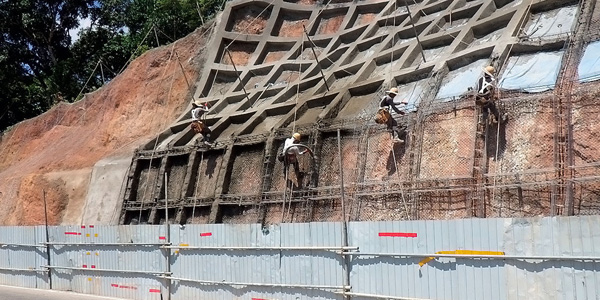
"Protect people from landslides"
The sprayed slope frame method uses concrete sprayed over metal mesh frames. This is common in Japan, but still new in Sri Lanka.
Showcasing rapid construction to locals
Sri Lanka has about 1.5 times the rainfall of Japan. This causes a lot of landslides, putting the lives of residents at risk and also heavily affects economic activities due to severed roads. So in 2013, JICA started carrying out cooperation for the construction of anti-landslide measures along the slopes of major national routes running through the mountainous areas. Sri Lankan construction companies and SOLTEC Co. Ltd., a Japanese disaster prevention contractor, are working together to build these measures.
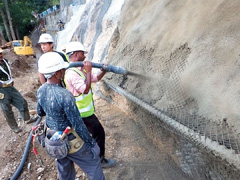
"Trying our hand at Japanese methods"
On site, one Japanese and four Sri Lankans formed a team, and each site had between five and fifteen workers.
YAMAMOTO Yuzo of SOLTEC explains, "The slope protection should be built quickly to ensure that no new landslides happen in that area. As labor costs are so low in Sri Lanka, the conventional method has been to use a lot of laborers to dig into the slope and insert steel bars, then pour in concrete, all of which takes a long time."
SOLTEC has been introducing a new approach to Sri Lanka using Japanese construction methods that take less time. These include: the sprayed slope frame method, which holds down a slope by spraying concrete over a metal mesh frame; and water-collecting boring, which expels the water that causes landslides from inside the ground.
The local engineers are very enthusiastic. "We often got asked ‘why do you do it that way?' when explaining to them about work methods. We really felt their passion for mastering ways to prevent disasters."
As a result, construction work efficiency has risen and construction periods have shortened, while costs have dropped as well. YAMAMOTO says with confidence: "I'm sure we've been able to show that Japanese techniques have allowed this level of improvement."
Sri Lanka's Road Development Authority has requested that SOLTEC expand its work from the initial 6 sites to a total of 16 sites, demonstrating their trust in working together on this project.
Disaster prevention measures for awareness and knowledge
In order to protect residents from landslides, it is important not only to implement hard measures, but also to take soft measures such as obtaining information about evacuation and unsettled areas. These are called "non-structural measures " in the field of disaster prevention, and Earth System Science Co., Ltd., consultants contracted by JICA, have been passing on these methods to Sri Lanka's National Building Research Organisation (NBRO). "Get information" refers to analyzing the topography and creating hazard maps. KOIKE Toru of Earth System Science explained, "Initially, NBRO was modifying methods they had established over twenty years, so we weren't certain they would be able to accept our proposal." In fact, while there were hazard maps in Sri Lanka, they were all large-scale, too large to show the risk to individual houses or plots of land. However, NBRO had many engineers who had studied geology, geotechnology, or urban planning, so by explaining the theory using examples from Japan, they were convinced, and soon a mutual understanding was reached.
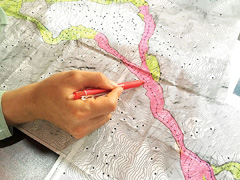
Preparing a hazard map. There are a lot of tea farms in the mountainous areas of Sri Lanka, and the residents there are vulnerable to landslides.
This pleased KOIKE: "I was amazed to see them create hazard maps covering a wide area based faithfully on the methods we'd taught them. Often, our own work couldn't keep up."
The project is now in its third year, and from here on it will start preparing proper guidelines such as "Evacuation - establishment of an early warning system" and "Don't Settle - the implementation of land use regulations."
The desire to protect people from landslides is one shared by both Japan and Sri Lanka, and work on effective measures continues.
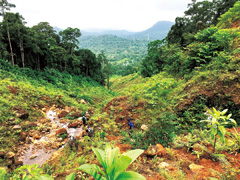
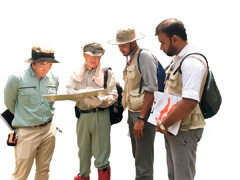
"Know the site!"
Field investigation with NBRO staff. Surveying the topology, geology, and land use.
LiDAR-DEM high-precision topological map adopted with JICA support.
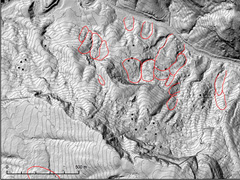
Topological map using LiDAR-DEM
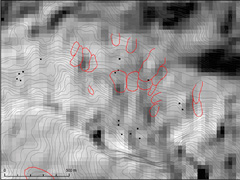
Topological map from the local survey bureau
NBRO Director General Dr. Asiri Karunawardena
Regarding landslides, it is important to assess the risk based on hazard maps, strengthen warning systems and, above all, prevent settlement and development in dangerous areas. NBRO, as a central government agency, aims to make great progress by encouraging local governments to participate in the project.
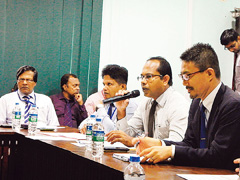
NBRO Director General Dr. Asiri Karunawardena (second from right) provides strong leadership to his staff. He is a good partner for KOIKE and his team.
column:
Offering Nepal Japan's experiences with earthquakes
The earthquake that struck Nepal on April 25, 2015 [1] caused severe damage to the country. While working to rebuild houses, schools, and hospitals in the country, JICA is also sharing experiences and lessons learned from the Great East Japan Earthquake with the cooperation of Higashi Matsushima City in Miyagi Prefecture. The City of Higashi Matsushima's knowledge of reconstruction planning through a participatory process that emphasizes consensus-building with residents has given the Nepal Reconstruction Authority and many others involved suggestions on how reconstruction should be carried out, and what role local governments should play.
Note
- [1]This was a magnitude 7.8 earthquake that struck central-western Nepal. There were 8,790 fatalities, 22,300 injuries, about 510,000 completely destroyed houses, and about 280,000 damaged houses (as of June 2015).
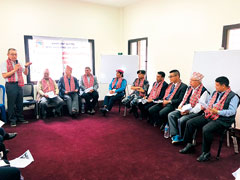
KOYAMA Osamu (left), the deputy mayor of Higashi Matsushima City, shared his experiences with Nepalese government officials at many reconstruction seminars.




scroll